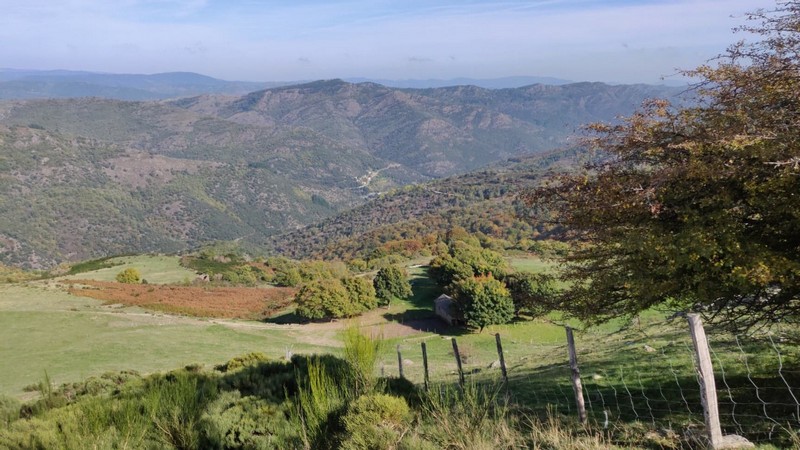
Col Salidès pass via St-André-de-Valborgne
9 points of interest

Le village de St André de Valborgne - Béatrice Galzin  Architecture
ArchitectureThe village of St André de Valborgne
As you stroll along the quay above the river, you can still see the handsome bourgeois houses dating from the silk boom. If you look around, former spinning mills and industrial buildings dedicated to silk farming can still be seen in the landscape. A little lower down, opposite the 16th century château, you can listen to
Bernadette Lafont on the Camisard saga in and after 1702. As you reach the square again, quench your thirst at the fountain and have a look inside the Romanesque church (12th century).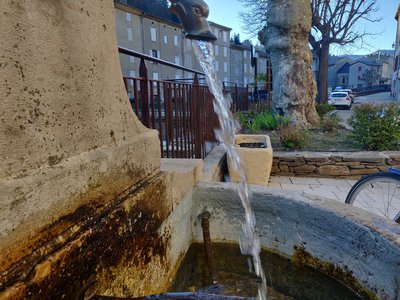
© Béatrice Galzin  Water
WaterOne spring, five fountains
This fountain is one of Saint-André’s five public fountains, all of which are supplied by the same spring (its water is thus the same as in the Fontaine du Griffon). Before houses were connected to mains water, there were many more fountains on this side of the quay.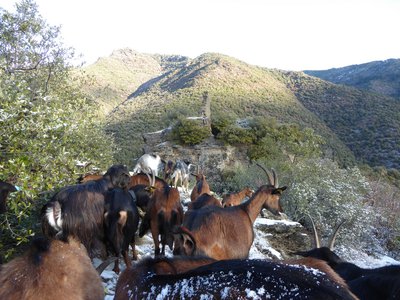
Les ruines du château de la Fare - capri’ces des Cévennes  History
HistoryChâteau de la Fare
Following on from many battles against the Château du Folhaquier, today all that is left of the large mediaeval castle of the Lord de la Fare is this expanse of wall. Built at the summit of a schist hill, the castle is surrounded by sheer drops on all sides. The former village was fortified and located just below the expanse of wall. Sources indicate that the castle had a drawbridge and a chapel.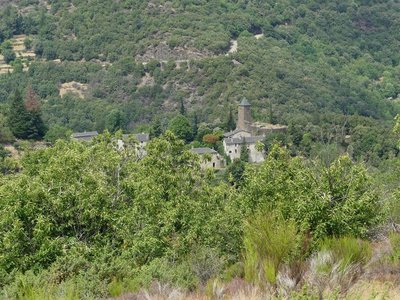
Le château du Folhaquier - Nathalie Thomas  Architecture
ArchitectureThe mediaeval castles
Very close to the village of St-André de Valborgne, on the edge of a cliff, stand the remains of the castrum of La Fare, a defensive castle believed to date from the 12th century. Only a wall face of the tower survives. The ruins above bear witness to the site’s importance. The archives mention a well, cistern and drawbridge – but on site nothing remains. On the next spur is the majestic and dominating castle of Le Folhaquier. Transformations throughout the centuries by various owners have shaped the hamlet as we see it today. The era of silk farming strongly influenced the landscape by welcoming the “tree of gold”, the mulberry tree.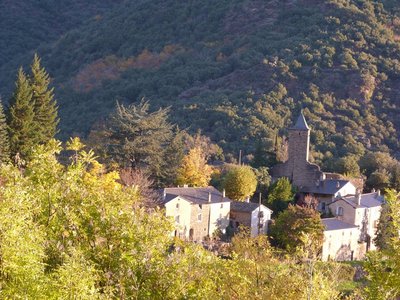
Hameau du château du Folhaquier - Béatrice Galzin  History
HistoryChâteau du Folhaquier
The Château du Folhaquier is outlined on this small ridge, which was a strategic site in the Middle Ages, overlooking the Gardon de Saint-Jean river and the Château de La Fare opposite.
It is separated from the hamlet by a ditch cut into the schist bedrock, and a square tower can still be seen that was built in the 16th century on 12th century ramparts, as well as the vestiges of a round tower at the other end. The foundations of the castle chapel are easy to distinguish, and the Romanesque church of Notre-Dame du Folhaquier, which remains in an excellent state, has withstood the elements for almost a millennium.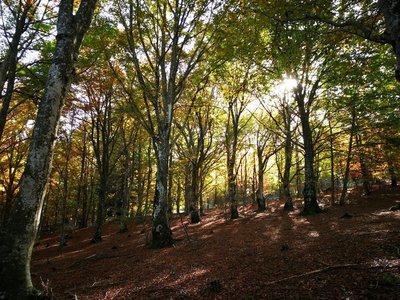
La forêt de hêtres - Béatrice Galzin  Natural environment
Natural environmentThe forest of L’Hom
From the 19th century, the forest of L’Hom was the “reserve” of a private estate of over 700 hectares. Its animal stocks were protected and used as a “savings account” in the event of unforeseen financial needs. This situation in part explains the diversity of the forest, which stretches from 600 to 1,1000 m in altitude and contains many species: native (holm oak, sweet chestnut, beech, birch, wild cherry, rowan, pine, spruce, etc.) as well as exotic ones, which were introduced by the new owners (northern red oak, red maple, giant redwood, larch hybrids, etc.). This private forest has a management plan based on the prosylva principles (forestry close to nature), which was approved by the body in charge of forest management and the Cévennes National Park. There is abundant game, and you may spot a deer or stag on your walk.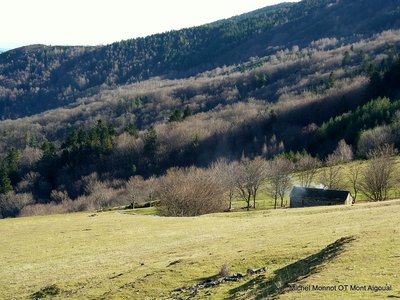
Le Col Salidès - Office de tourisme OTMACC AgricultureThe transhumant shepherd of the Col de Salidès
From the end of spring onwards, the Col de Salidès livens up. The transhumant shepherd moves up for the three months of summer grazing in this magical spot with almost 1,000 sheep. In all weather, the shepherd takes the animals outside so they can graze new grass. He has to both manage his pasture land and look after the sheep.
At the end of summer, each livestock farmer comes to recover his animals. Be careful around the dogs that watch over the flock!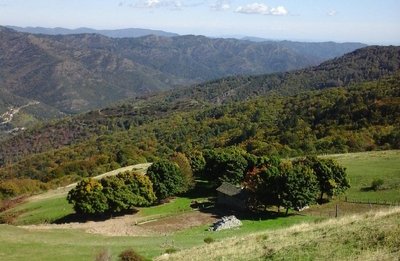
Maison du berger - Michel Monnot  Pastoralism
PastoralismSummer pastures
Since time immemorial, animals have naturally migrated from the plains into the mountains in summer. The Salidès pass has summer pastures for sheep. The shepherd’s house is just below you on the Mediterranean side. The shepherd stays several months with about 800 sheep and a few dogs. Careful: patous, the big and handsome white dogs, are there to supervise and defend the herd!
It is important for the herd to graze here. The animals fertilise the soil and maintain the open spaces.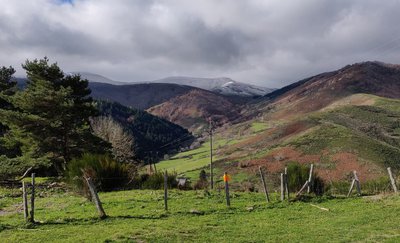
La Vallée de Sexte et son manteau blanc - Béatrice Galzin  Water
WaterCol Salidès
The bare ridge that rises opposite is the watershed between the Mediterranean and the Atlantic. Rain that falls on the Sexte valley flows into the Tarnon below (on the left) and ends up in the ocean. On your right, the Mediterranean side offers extraordinary views onto the foothills of the can de l’Hospitalet plateau and the entirety of the Cévenol mountains. On some days, the Alps and Mont Ventoux can be seen in the distance …
Description
Start behind the Romanesque church of St-André de Valborgne, next to the bridge.
Cross in front of the church, cross the square and take the small road on the left to follow “Col Salidès”, via “Mas Galabert", "La Virevolte" ,"Les Mézariés". Then climb to the col Salidès pass via "La réserve de l'Hon".
At the Salidès pass, head towards "Aire de Côte". At the signpost "Bel Fats", walk downhill to "St-André de Valborgne".
This walk is taken from the guidebook Massif de l’Aigoual, published by the Communauté de communes Causses Aigoual Cévennes as part of the collection Espaces Naturels Gardois and the label Gard Pleine Nature.
- Departure : St-André de Valborgne
- Arrival : St-André de Valborgne
- Towns crossed : Saint-André-de-Valborgne and Bassurels
Forecast
Altimetric profile
Recommandations
Caution: patous (livestock guard dogs) at the Col Salidès pass and around Caprices des Cévennes farm! Seek advice on how to behave near these dogs from tourist offices and National Park information centres.
Information desks
Tourism & national parc'house
Col de la Serreyrède, 30570 Val d'Aigoual
The Maison de l'Aigoual houses the tourism office Mont Aigoual Causses Cévennes and the Maison du Parc national. This visitor centre provides information on and raises awareness of the Cévennes National Park, its sites and events as well as the rules that must be observed in the National Park's central zone.
On site: changing exhibitions, video projections, Festival Nature events and shop Open year-round
Tourism office Mont Aigoual Causses Cévennes, Saint-André-de-Valborgne
les quais, 30940 Saint-André-de-Valborgne
This office is part of the National Park's associated tourist-information network, whose mission is to provide information on, and raise awareness of, the sites and events as well as the rules that must be observed in the National Park's central zone.
Transport
Access and parking
Parking :
Calculateur d'itinéraire Lio
Utilisez le calculateur liO pour organiser votre trajet en région Occitanie.
Autres régions
Calculez votre itinéraire en Auvergne Rhône Alpes sur Oùra
Biodiversité autour de l'itinéraire
Source

Report a problem or an error
If you have found an error on this page or if you have noticed any problems during your hike, please report them to us here:



